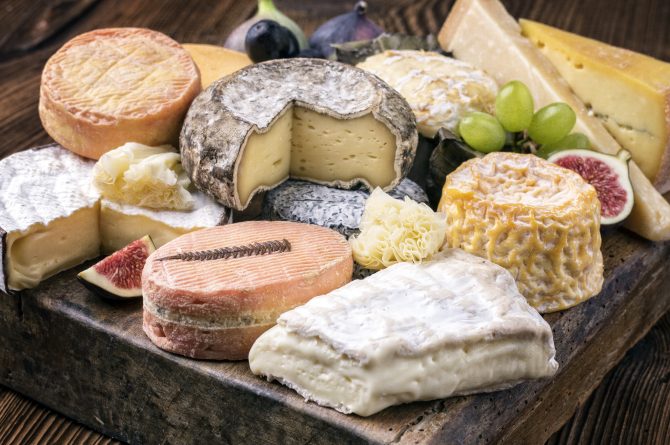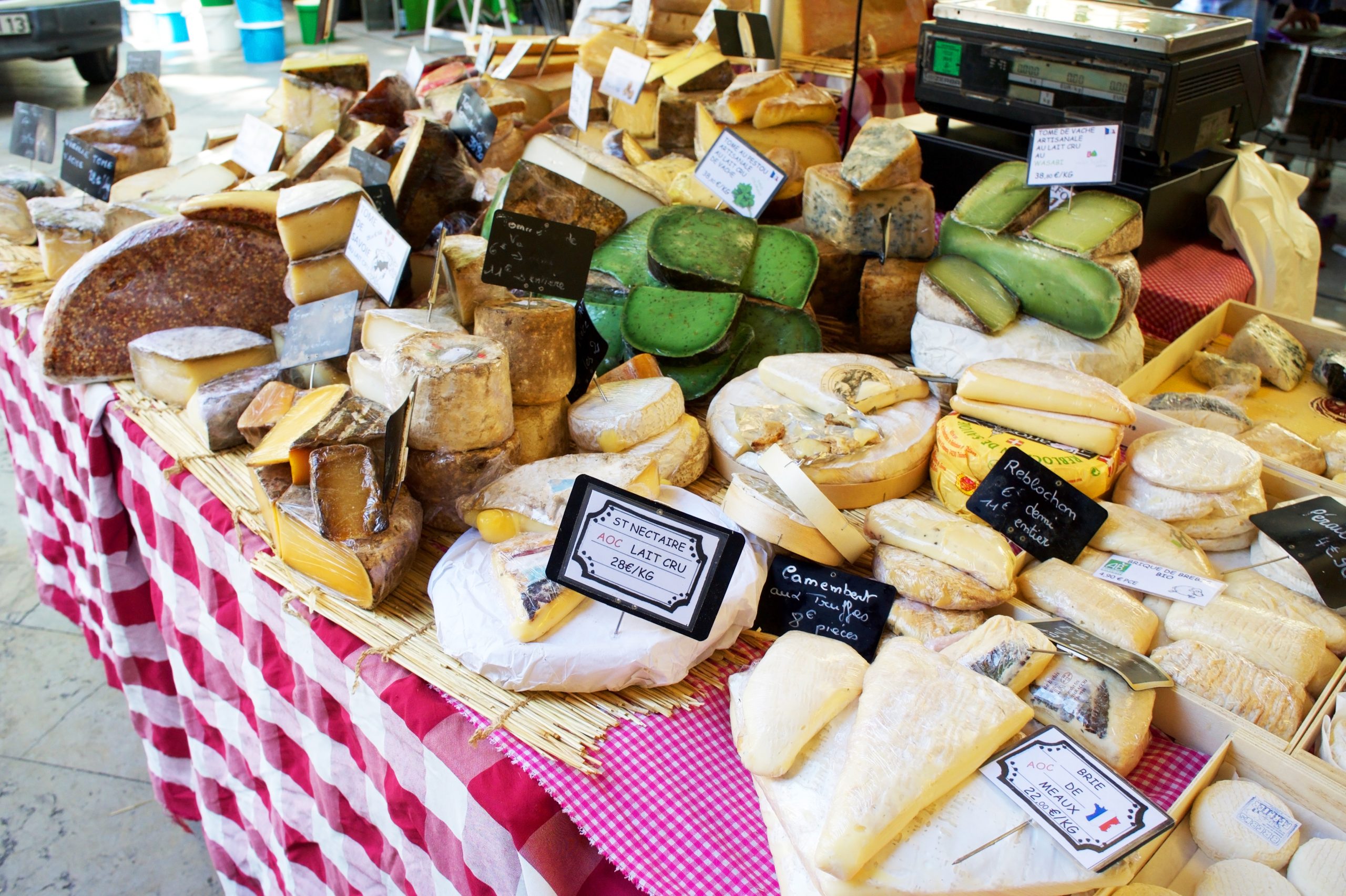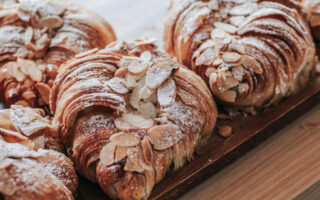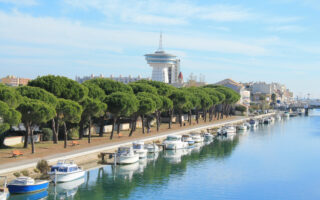An Insider’s Guide to French Cheese
Feature


France is world-famous for its cheese, so living here is simply cheese heaven! Brie, Camembert and Roquefort are some of the major players, but as I have learnt, there is so much more to discover.
Every region of France has its own cheeses, which are inevitably characterised by the specific climate and the terrain. There are hard, pressed cheeses, soft cheeses, and blue cheeses. Cheeses can be made with goat’s milk (chevre), cow’s milk, or sheep’s milk (brebis).
Whatever the cheese, we prefer, where possible, to buy hand-made artisanal cheeses due to the skill involved and the superior flavour and quality. Only ten minutes from our house, in Val d’Auge is La Bulle de Chevre, where the lovely Ophelie makes hand-made goat’s cheese. Her cheeses range from a well-aged hard cheese that we use like parmesan to a beautiful Tome to really young soft, spreadable cheeses that are so creamy and delicious. I love nothing more than her young cheeses rolled in lavender, spices or freshly ground peppercorns. Not only do they look beautiful, but they taste so fresh and creamy with a hint of background perfume.
Her goats give birth early in the year, and it is around the end of March into April time that cheese production begins again – just in time for those spring markets.
French Cheese cheat-sheet: a basic guide
There are more than 400 varieties of French cheese, but these are some of my favourites:
- For those who love Cheddar, Cantal comes from the Auvergne mountains, and there are two main types – young (jeune) and between the two (entre deux), which is aged.
- Comté is a traditional hard cheese used in fondue or raclette, and it comes in fruité (fruity) or salé (salted) and has been made in basically the same way for hundreds of years.
- Cendre is a cheese typical of the Poitou Charentes region. It is a goat’s cheese left to age for roughly six weeks. The rind is coated in ash, and it has fresh, milky flavours and goes lovely in a salad or with a crusty baguette. Often served in log form (buche).
- Mont d’Or is made along the France-Swiss border and is a seasonal soft cheese with a distinctive woody taste.
- Bleu d’Auvergne is a soft blue cheese made using traditional methods. It can vary considerably in taste from quite sharp to creamy.
- À la truffe – If you like truffles (or even if you don’t or are unsure, it is worth trying) there are cheeses, especially at Christmas time, with truffle added. In my experience, once tried, never to be forgotten. Even at over €40 per kilo, I am not dissuaded – it is that delicious. Thank you to my lovely friend for her recommendation, which I am happily sharing!
Top Tip! In France, at any cheese counter, or market, you can ask to try before you buy, and I thoroughly recommend you do.

French cheese etiquette
Cheeses in France are served either with an aperitif alongside a quality charcuterie board or as a cheese course in a meal where there is a starter, main course and dessert. Take note: unlike in most anglophone countries, the cheese course appears BEFORE the dessert.
For your cheese course, if you follow these simple rules, your French guests will be happy. Do remember, though, the main thing is to enjoy your meal with friends and family, not to worry too much about etiquette!
- Have quality artisanal bread from a boulangerie to accompany your cheese course, but do not expect people to eat too much – the cheese itself is centre stage. Definitely, no crackers required!
- Choose quality local cheeses plus some cheeses which offer your guests options and a balance of flavours. An odd number of cheeses on a cheeseboard is more aesthetically pleasing to the eye.
- Take the cheese out of the fridge an hour before serving to allow for the flavours to develop. Do remember a good brie may collapse, so keep an eye on timings and temperatures – especially in summer.
- Cutting the cheese – there are actually detailed rules as to how best to cut different-shaped cheeses. But life’s too short, right?
- It is perfectly acceptable to spread a runny, baked camembert onto your bread but not to spread another French soft cheese. It should be sliced and remain intact.
- Explain your cheeses to your guests and offer advice as to the level of intensity of each cheese if need be. In terms of eating your cheese course, you should begin with the mildest cheese first and work your way up in strength. Remember, it is rude to refer to a cheese as ‘stinky’. Use the word ‘fort’, meaning strong.
- Cheeses should be eaten separately so as to savour each flavour.
- Cheese knives – there are certain types of knife shapes that are recommended depending on the texture of the cheese. If you place a knife with each cheese, then those knives should be used with those cheeses and not mixed and used with other cheeses. If there is only one cheese knife for the cheese board, then it should be wiped with a provided napkin in between each new cheese cut.
- Slice thin pieces of cheese, not huge wedges, and it is not polite to take more than three cheeses at any one time. This rule, I need to highlight and laminate onto the table in front of my husband!
- As a general rule, do not eat the rind on a hard cheese. Any other cheese, for example blue, goat’s or soft cheese, then the rind can usually be eaten.
- Passing the cheese plate around the table. It is etiquette for the cheese plate to pass from the oldest female to the youngest female, then the oldest male to the youngest male. Or, in our house, just make sure you manage to choose before my husband…
Explore, sample, and enjoy as many cheeses as this wonderful country has to offer. Even learn how to make your own – many artisans offer cheesemaking courses, and it is fabulous to watch.
Bon Appetit!
Share to: Facebook Twitter LinkedIn Email
By Carol Paylor
Leave a reply
Your email address will not be published. Required fields are marked *



